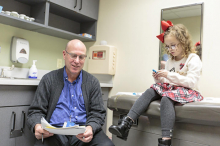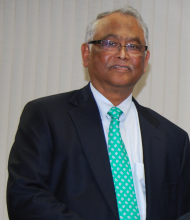She Almost Skipped a Routine Exam, But Didn't – And It Saved Her Life
New Inductions into AOA National Honor Society
Alpha Omega Alpha (AOA) is the national medical school honor society. Induction into AOA is a high honor, recognizing students not only who have had high academic achievement, but who have also demonstrated excellence in class leadership and service, community service and engagement, and scholarship and research endeavors. Only 1/6 of any medical school class achieves AOA induction. The UK chapter of AOA, consisting of faculty, resident, and student members, met this past week and selected Junior students into AOA.
Gill Heart and Vascular Institute Celebrate Top Spot as Preferred Provider
Hoellein Named Associate Dean for Student Affairs
Fuel Your Body Like an Athlete
This article originally appeared on UKNow: http://uknow.uky.edu/uk-healthcare/fuel-your-body-athlete
Student Successfully Defends Dissertation
On Tuesday, March 7th Physiology trainee Erica Weekman successfully defended her dissertation and earned her doctoral degree.
"Neuroinflammation in Alzheimer’s disease and vascular cognitive impairment"
Doctoral Committee Members
Dr. Donna Wilcock
Department of Physiology, Mentor
Dr. Steve Estus
Department of Physiology
Dr. Elizabeth Head
Department of Pharmacology & Nutritional Sciences
Dr. Joe Abisambra
Department of Physiology
UK Pediatrician Helps Families Build ‘Greenhouses’ for Behavioral Development
Spring Universal Tuition - Due March 13th
[from The Graduate School]
Endowment created for Patient-Centered Care Awards at UK HealthCare
By Josh Shepherd
Each year in the life of UK HealthCare, there are moments in which physicians and staff exemplify the very best aspects of patient and family-centered care. Dr. Sibu Saha, division chief of UK Cardiothoracic Surgery, wants to do more than just recognize those exceptional moments – he wants to reward them. In that spirit, he has created an endowment to fund a set of annual awards called The Saha Patient-Centered Care Awards.
Department of Surgery providers featured in UK HealthCare “Making the Rounds” featurettes
“Making the Rounds” is an innovative series of short videos produced by UK HealthCare marketing to profile physicians, nurses, and allied health providers at work with the University of Kentucky. The project has been ongoing since September 2016.
Among the profiles are four surgeons affiliated with the UK Department of Surgery.
To access the entire archive of “Making the Rounds” videos, visit the UK HealthCare blog.







